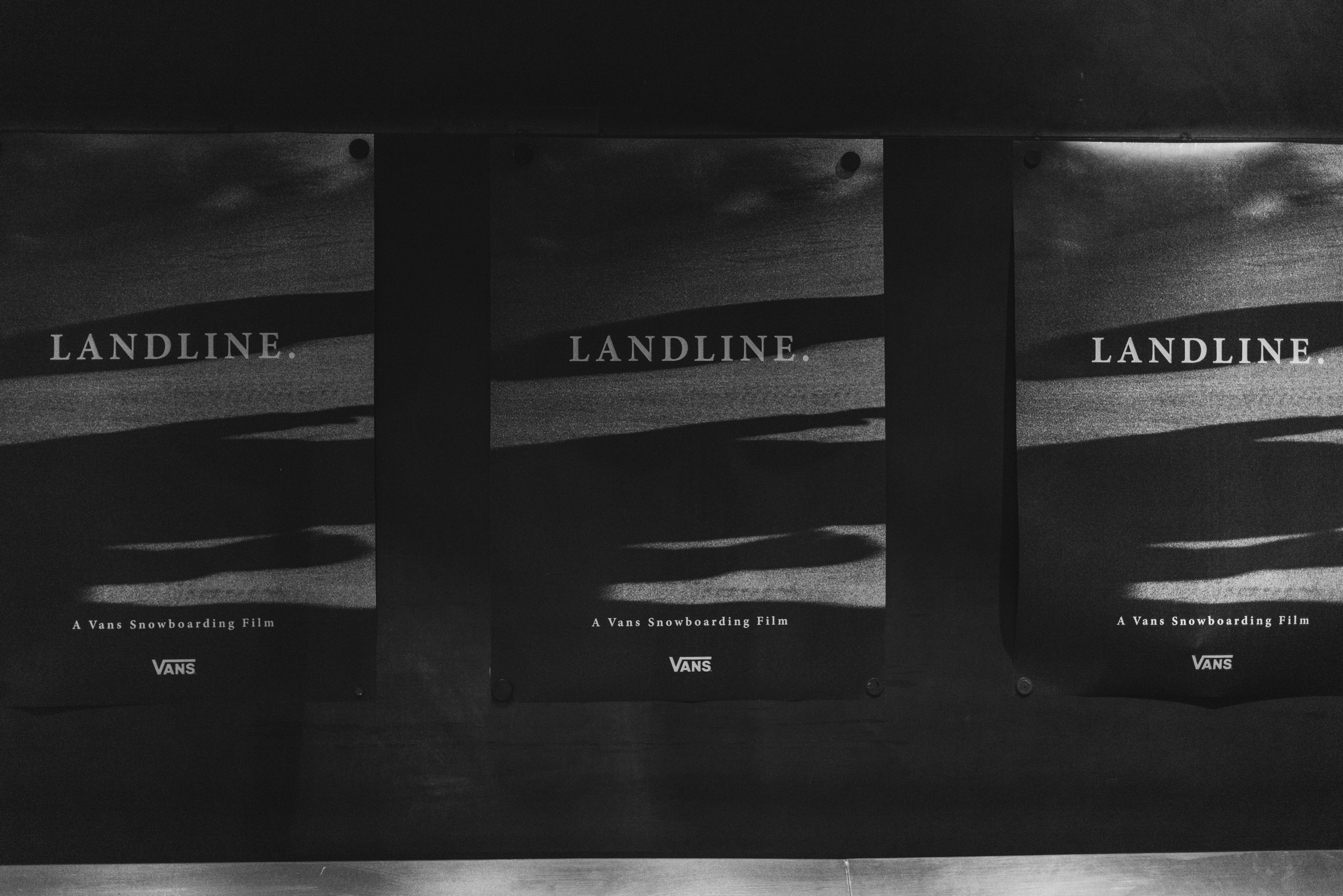

In time, it all comes to light. In a glimpse, near the end of Vans’ seminal 2018 movie Landline., director Tanner Pendleton finds a string of fleeting moments that, over the five years since the film’s release, have proven forerunners of a movement. Back then, Pendleton and last-part-rider Jake Kuzyk were high level performers, beloved within the snowboard community. Simultaneously, the pair were sexually closeted and self-conscious of how they moved through the world of snowboarding. And yet, in all of the last four shots of Landline.’s closing part, Pendleton’s editing frames Kuzyk, focused and methodical, moving across barriers, into or out of the shade, through the light of a glowing sun. It would take two more years for them to proudly proclaim their sexualities to the world, but with Landline., Pendleton kicked off the beginning of a new era in snowboarding, an era with a whole new spotlight.
It’s not hard to imagine a reality where Landline. was never made. In 2016, early on in production, snowboard movies were reaping waning influence. Stalwart production companies like Standard Films were closing shop, while major producers like Absinthe Films or Travis Rice and Red Bull were failing to drum up the same excitement they had in the past. Social-media, online shopping, and climate change swirled (and still swirl) around snowboarding as potential catalysts for collapse. In the midst of all that, Vans Snow was itself only recently recovering from a monumental lost year, failing to produce any snowboard boots in the 2014/2015 season, and there were quiet rumors that it may become another major footwear brand to abandon snowboarding.

The years leading up to the making of Landline. were marked by the belated maturation of snowboarding. After its 80s’ infancy, the 90s’ wandering teenage nonchalance, and the 2000s’ hedonistic early adulthood, snowboarding (and many snowboarders) was moving reluctantly on from drama and excess, facing the full reality of responsible adulthood. The foremost brands in the industry were led by corporate boards, concerned with investment returns, market shares, and a much finer attention to brand image. Gone were the days of exorbitant budgets and prize purses. The rise of Olympic snowboarding and, to an arguably greater extent, the mainstream popularity of movies like The Art of Flight, had created a kind of passive popularity for the sport: rather than a manic energy driven by young people searching for belonging, more and more snowboarders seemed to be middle-class adults with a hobby. Snowboarding seemed as likely to be lumped in with cycling or kayaking as it was to be with punk rock and rebellious youth.
There seemed little impetus for Vans, at the time just one player in a crowded field of snowboard boot manufacturers, to invest a serious amount of money in a major movie production. The rise of Instagram was picking away at the “snowboard film,” looming over any movie’s influence in the sport as each brand became focused on building a robust social media presence. Their very purpose, and their effectiveness as a marketing tool, seemed in question. They were becoming less popular, with increasingly fewer productions each year, and were getting shorter, with those pushing the hour mark more regularly called long winded than they were called detailed. Sales of videos on DVD were failing as an increasing number of videos were being released online for free, treated as marketing pieces alone, rather than products in and of themselves.
But, somehow, Landline. did get made. Vans managed to gather enough money and talent to throw their support behind diirector Tanner Pendleton – at the time a cult-darling of snowboard filmmaking – and a team of talented filmers including Skylar Brent, Harry Hagan, Jake Price, and Hayden Rensch, who focused their cameras on an eclectic group of male snowboarders; some, like Pat Moore and Jake Kuzyk, were well established in their careers, but many, like Sam Taxwood and Cole Navin, were only just asserting themselves are powerhouse snowboarders. And in the five years since the New Year’s 2018 release, Pendleton has gone on to become snowboarding’s preeminent auteur, Brent, Hagan, Price and Rensch have produced numerous outstanding videos, and the team that was solidified in Landline. has become iconic.
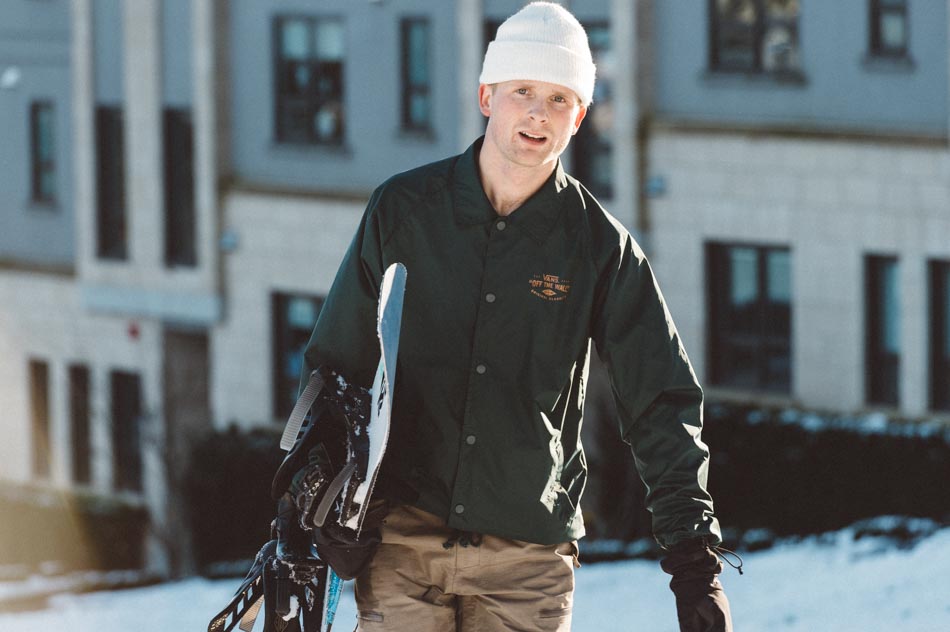
In its making, Landline. became a turning point in that history of snowboarding: both the finishing touch on the era of snowboarding defined foremost by major movie productions, and a launching pad for the next wave of artistic and athletic achievement. At first, it’s connection to snowboarding’s current era of videos seems tenuous, with only minor qualities appearing up-to-date, such as the shirking of the – at the time – common major fall video tour and the lack of a widespread DVD release (though limited edition photobook/DVD combos were given to certain snowboard shops). Structurally, Landline. seems another in the long line of snowboard movies: it is long, approaching nearly 50 minutes; it’s the production of a single brand’s team; it enjoys the backing of well-funded production; nearly everyone in the video is “pro”; a single person is credited for music licensing (no, sadly, it is not Lory Vincent); it features no women’s parts; and there are well defined parts for each individual rider.
But rewatching it now, Landline. as a historical, well-funded, and well-defined “snowboard movie” is overshadowed by its influence on the following generation. It is a subtle but fundamental aesthetic shift, from the previous era’s movies to the current, that seems so well encapsulated by Landline.. Despite its vintage formula, its emphatic soft lighting, emotional music (I was shocked when rewatching Landline. that there were no Smashing Pumpkins songs), and handheld camera work draw an obvious line to the last half-decade’s snowboard videos. In the middle of the ostensibly widening aesthetic gap between an archetypal snowboard “movie” like Absinthe’s Pop and a modern snowboard “video” like Jon Stark’s living room, sits Landline..
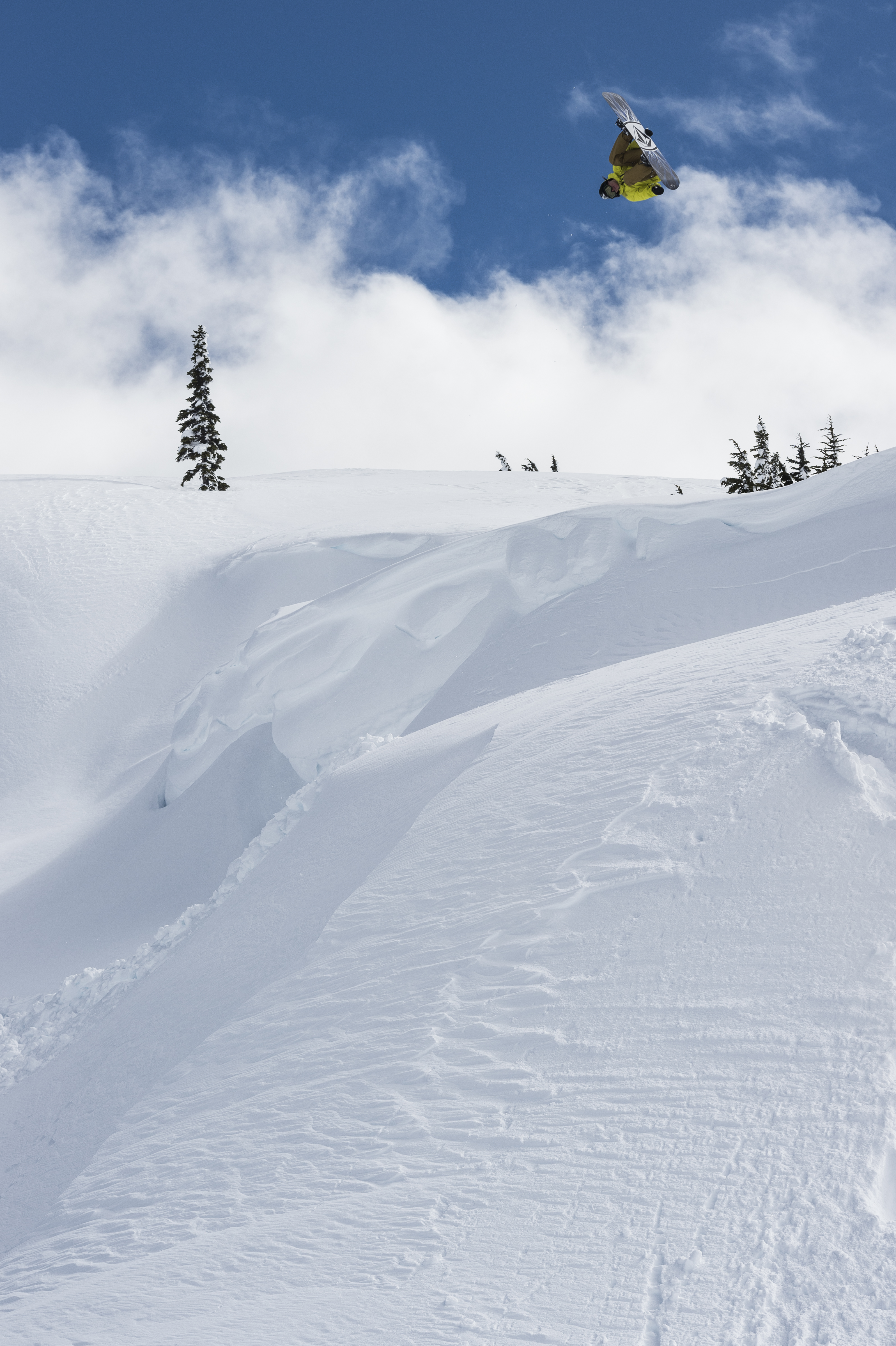
Landline. inarguably revolves around a sense of nostalgia: the soundtrack is old (centering on friendly music of the eighties and nineties), much of the film is shot on 16mm film, and the title calls back to the last generation’s lost connections – an alternate version filmed on tape and featuring more hip-hop may have been called Dial Up. The introduction dwells in such a mood, pulling from long-held snowboard video tropes: pushing on a skateboard, slow falling snowflakes, riding in the van, friends together in front of a landscape. As so many movies have started (or ended) in the past, the opening of Landline. appears like a retrospective on seasons of fun, the type of video edit any artistic group of friends might make to commemorate their communal salad days. In such a light, it may have been simpler for Pendleton to have turned the movie into a sagging homage to snowboarding’s past, winning over only aging viewers in their melancholy, or even worse, turned it into a rip off of snowboarding’s past feel good works. But Landline.’s nostalgia is more refined, setting up the aging style of snowboarding to be picked away at, pausing repeatedly to think about its youth.
It is in the first few minutes of the film that this becomes so apparent. The pleasant but archetypal intro is followed by thirty seconds of Sam Taxwood in the same vein, as we see him, like we have seen so many riders before, tomahawk violently while musicians scream over heavy guitar. But when we finally see Taxwood’s face, it is his mischievous grin widening as he swings on a child’s swing set that is the focus. Here is the first time Pendleton upsets expectations, signifying the beginning of a deconstruction; after the violence and the screaming, convention calls for Taxwood looking tough. Instead, by presenting him as young and playful, Pendleton shows his own concept of snowboarding focuses on kindred personality rather than achievement. He seems to toy with the transition from the old ideas to his new vision, finally presenting Taxwood’s opening part title screen, the belated note of the real beginning of a snowboard movie, next to the rider still healing from an open head wound. But when J. Mascis’s destructive rock and roll rage leads unexpectedly into more approachable and understandable emotion, Pendleton shows Taxwood, and subsequently the entire Vans team, as individuals to be respected as people, in addition to venerated as snowboarders. The feeling grows through Taxwood’s part – as his remaining bails focus on perseverance not violence, and his riding and personality alike appear comfortable and stylish – but it is established early. Immediately, the warmth of the 16mm film makes the Taxwood and company look as if they are underdressed for winter– in light sweaters or in Blake Paul’s case, no hat – simply because they are warm enough. In the past, the prototypical “cool” snowboarder in a button-up shirt appears miserable during frigid nights, but the riders of Landline. are presented lightly, enjoying both pleasant weather and their time spent snowboarding.
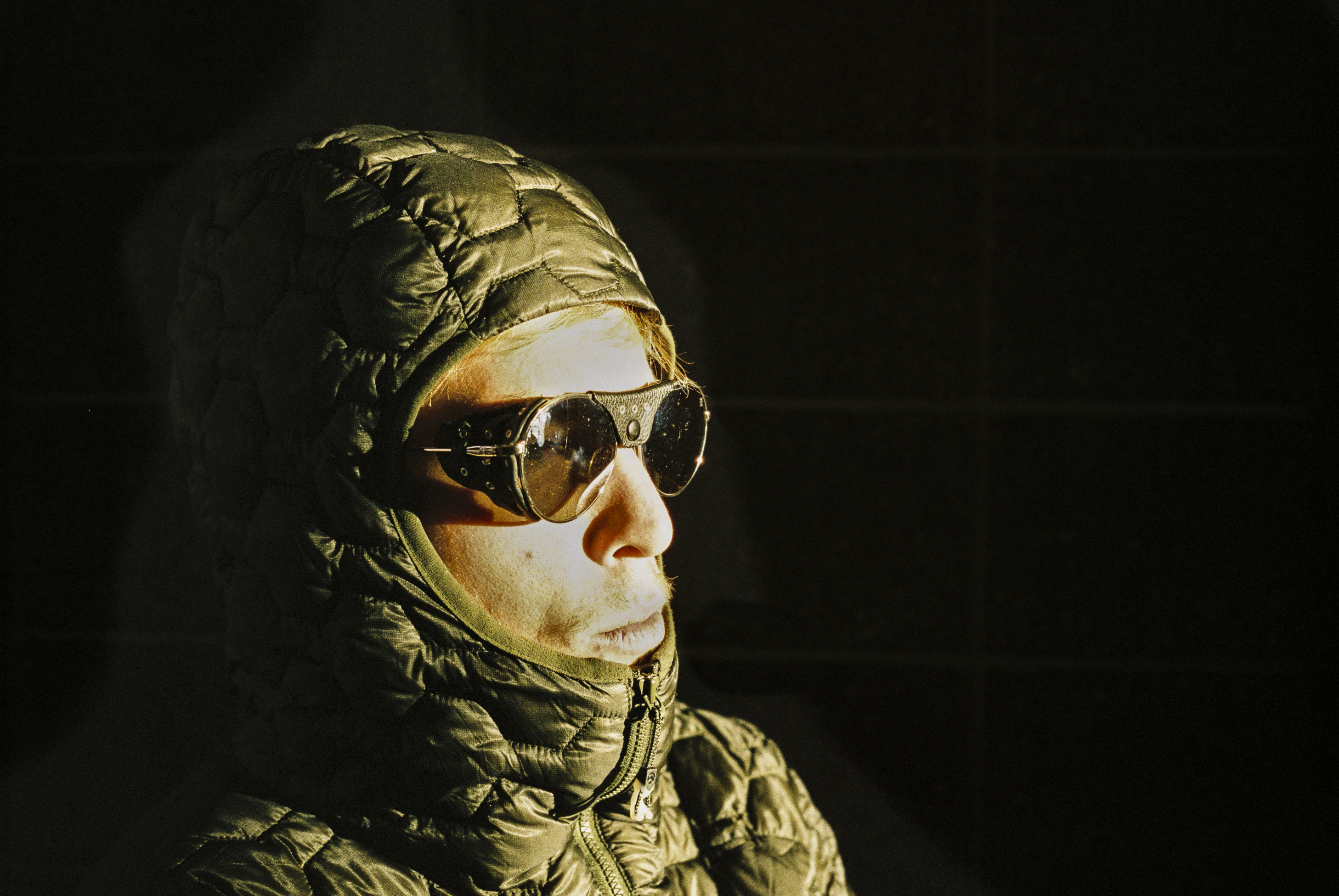
Following Taxwood’s opening, and its deconstruction of the film’s expectations, Blake Paul’s backcountry riding overhauls the snowboard movie’s traditional aesthetic notions. The first time we see Paul comes after the camera dwells on a backdrop of an immense and impressive rock wall dominating the landing and ride away of a lonely back-country jump. In the past, snowboard videos have often fallen prey to the ideas of “outdoor sports,” painting the mountains colonially as imposing frontiers to be conquered. Instead of launching as a conquer off into the horizon, Paul appears from behind the off-kilter camera spinning a simple frontside alley-oop into a setting sun, riding unreservedly down the valley beneath the monuments. Pendleton presents the mountains as a world to be approached slowly and reflected on, rather than be subjugated, and placing Paul as the first backcountry-focused part in the video strengthens that outlook. Paul’s famous style spins slowly, working noticeably with the features of a mountain rather than against them. Even the “attempts” at high-level athletic prowess are treated with characteristic levity: Paul’s clean double backflip is sandwiched on both sides with him riding with an open champagne bottle in hand. And instead of filling his part with increasing rotations, Paul drifts through 360s and 540s, ending with a lackadaisical front 9, complete with an elegant melon grab.
The last piece of Pendleton’s first act, and his dissection of snowboard film’ past, is his most obvious note of parody. In an introspective beginning to Dan Liedahl’s part we see Taxwood and Liedahl tuning their snowboards, foreshadowing serious snowboarding. But instead of somber professionalism, we instead are treated to Liedahl’s childlike excitement in pronouncing that he is “never going home.” From there, driving punk music starts and Liedahl’s fast-paced riding seems well suited for the traditional “punk rock” video part. But while his trick selection and the pace of editing stay in line with such an archetype, it’s the shots between that become satire. Instead of what might have been seen in a punk-rock part of the 2000s (heavy drinking, heavy falls, arguing with pedestrians, avoiding police), the aggression and speed of Rudimentary Peni’s music are paired not with Liedahl’s masculinity but with his excitement. In between his tricks we see him playing on an ice-rink with a snowskate, filming himself, smiling widely in the woods, and playing, several times, on monkey bars. It even appears for a moment that Liedahl’s last trick is to be sliding rail on his boots alone, but Pendleton takes a turn, ending slowly and on one of his stranger directorial choices. In a rare moment of public interaction, a woman with inimitable presence tells the Liedahl get serious and to “do your work”, in the form of two impressive and novel tricks (the pole-jam gap to front-lip, and the backside 50-50 ollie step-up gap) both featuring second camera angles. But the last trick we see of Liedahl is cut in hurriedly and briefly, hectically like the rest of the part: a beautiful hard-way backside 180 at the Salt Lake City’s Rail Gardens, a choice to end on a trick both highly difficult and an ode to snowboarding’s most welcoming street spot.
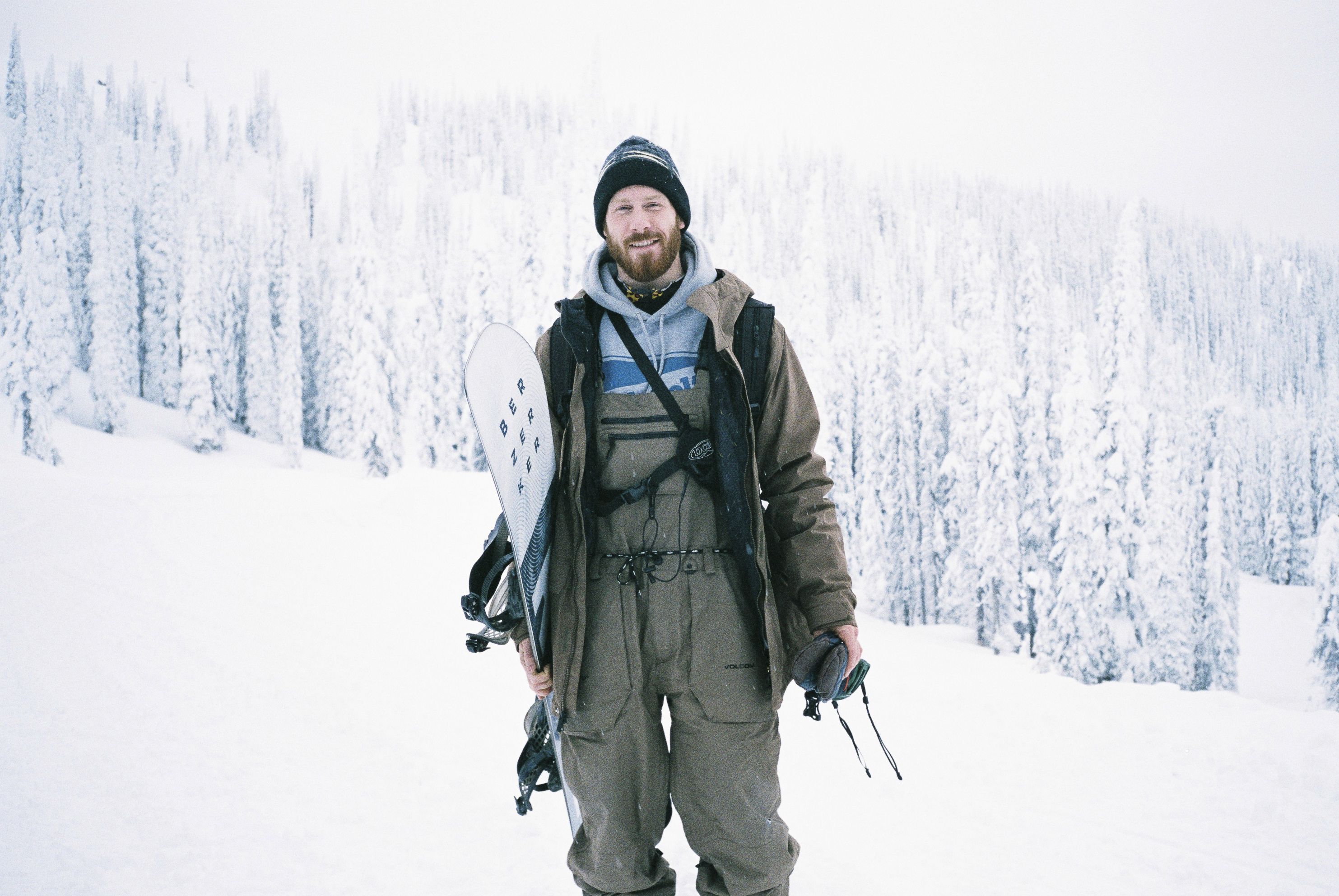
In the first third of Landline., Pendleton explores many of the tropes and concepts of snowboarding’s past. But throughout the film, he has paired his satire of the past generation with appreciation of the methodical and leisurely approaches of legends Bryan Iguchi, Wolle Nyvelt, and Jaime Lynn. They are a fitting trio for Pendleton’s thesis, long famous for choosing to follow their own path. Though brief, Pendleton captures their enigmatic nature: Lynn’s rejection of snowboarding machismo in favor of art, Iguchi’s rejection of Southern California-based shred culture, and Nyvelt’s rejection of snowboard bindings. With their insistence on snowboarding at their own pace, the trio emphasizes Landline.’s focus on individuality and accessibility. By including them enjoying themselves in their own chosen environment, Pendleton has signaled who to look for when searching for veteran guidance.
With Wolle Nyvelt standing in front of a burning pyre, Pendleton marks the end of his deconstruction of snowboard movies. In tearing down a genre, the end goal is usually to rebuild a piece of art in one's own imagination: in a way that is unique and personal to the artist, free from convention. And so, it’s fitting that the beginning of the rebuild starts with quintessential images of the temperament of Mike Ravelson: alone in the middle of the frame, doing a stationary flat-ground handplant. In recent years, Rav has asserted himself as a counterweight to the “snowboarder,” proclaiming (in verse), “I don’t wanna be a particular anything, I wanna be a peculiar everything.” And though his wide-ranging exploits, in poetry, visual art, and music, shine through in and around his riding, he has come, in his detachment, to personify the platonic ideal of a snowboarder. While the persona he rejects – someone focused on snowboarding they miss the other beauties of life – languishes, Rav strapped-in seems to relish in snowboarding, shirking convention in favor of whatever it is he wants to do. There is no sense of fashionable versus funny tricks, there is only the chaotic output of Rav, and in the end conventionally “good” tricks like a backside 270 gap feel more out-of-place than his eccentric outputs. That’s not to say Rav doesn’t look good on a snowboard – he performs the full range of tricks, from trendy to odd, beautifully, but like the early new-wave band Units playing over his riding, Rav is a pioneer ahead of his time: it’s confusing and a little overwhelming, but, if you can keep up, it’s incredible.
The chronological middle of Landline. is also its artistic center; from the pioneering anarchy of Mike Rav, Pendleton moves us to the handsomely aging style of Darrell Mathes, in a way also a snowboarder ahead of his time. Well dressed and with a focus on simplicity, Mathes seemed slightly out of place in the maximalism of the mid-aughts. But years later, when well-coiffed and tailored snowboarders are a dime a dozen, he sits above as Tastemaker, an obvious forerunner of the Vans team’s style. There is a hope that snowboarding can age as well as Mathes has, as his precise board placement and clean presses are soothing antidotes to cork-fests and missed-grabs. Even after falling violently and rising with a head full of wet snow, the next time he drops in Mathes is nothing but relaxed and put together. As we all get older alongside snowboarding, it’s Mathes’s attention to detail, paired with an obvious desire to just enjoy his time on a snowboard, that seems so intrinsic to Pendleton’s thesis.

After Landline.’s deconstructive opening, and before its prophetic closure, its second act floats loosely around the different stories of snowboarding. Here Pendleton chose to situate the artistry of Mike Rave, the authority of Darrell Mathes and Pat Moore, and, most notably, the power of Dillon Ojo. While last parts go to deserving riders, it is colossal middle-of-the-video parts that often go on to stand the test of time. A charmingly out-of-place Big L song signifies someone in a world of their own, as Ojo’s riding is still exceptional years later. Even if the years after Landline. had turned out differently, Ojo’s part would likely have become the movie’s greatest single piece, but with his tragic passing months after the film’s release, Ojo’s part in Landline. has become a monument to his legacy. In dark times it is tempting to look back on this part and wonder what might have been, but instead Ojo’s overwhelming personality makes it obvious to look back on it as a testament to his life and snowboarding. The riding is astonishing, and Ojo’s trick and spot selection are well ahead of his time, however, as is sometimes the case, the defining image of the snowboard movie is not a trick but a face: Ojo’s enormous smile, after one of his tricks or in celebrating the accomplishments of his friends. In an era where being impolite was a defining feature of appearing cool, Ojo simultaneously exudes cool and kindness, as his smiling face seems endlessly approachable and his emphatic riding is overshadowed only by his enthusiasm.
The drifting second act of Landline. ends with Pat Moore, who alongside Mathes is the eldest rider in Landline. to still be performing at a high level. Compared to Mathes chic outsider status, Moore has been at the forefront of professional snowboarding for a long time, but his part in Landline., like everything, feels different. Gone is the death metal and the winch-powered street gaps. Instead, we see Moore skipping back to a relaxed nineties style, fitting in nicely beneath the ominous Southbound Pachyderm by Primus. The first shot we see of Moore features switch pow riding and an incredible switch back 720, but a distant camera angle, showcasing the entire slope, makes the line look enjoyable and routine for someone as talented as Moore. Soon after, a long, floating backside 180 plays counterweight to the quintessential Backside 1080 double cork. And his final trick, a far-fetched frontside360 on a large step down in the middle of a line, comes alongside the beginning of a whimsical guitar line, and is followed by an elated Moore approaching the camera smiling ear-to-ear.

Like Mathes or Ravelson in front of the camera, Pendleton is a tastemaker behind it, and in watching Landline.’s closing it is hard to tell whether he predicted the future of snowboarding or dictated it: since 2018, the eclectic trio of Cole Navin, Arthur Longo, and Jake Kuzyk have become arbiters of snowboarding culture, whether they have intended to or not, and their parts in Landline. show why. Navin, for instance, explores a anarchic vision of snowboarding similar to fellow East-Coaster Mike Rav and marks a high point in the video’s approachability and minimalism. From the beginning, with Navin and friends rocketing around a waterslide and Mercury Rev proclaiming “my primitive words match my primitive heart,” it’s evident that he is focused on his straightforward approach to snowboarding and his friends above all else. While few have a hope of keeping up with Navin, his riding shows that you don’t even need a shovel, never mind a chairlift, to go snowboarding. Meanwhile friendship reigns supreme in Navin’s snowboarding: while his only bad fall – paired with debilitating chimes of a gong – is Landline.’s rare moment of discomfort, it is followed first by a shot of a tired looking but still inseparable duo in Navin and Ojo, then a return to fast and frenetic snowboarding, always accompanied by a smile and hug from a friend.
Longo, conversely, has become one of the most popular and captivating snowboarders in the world and the global leader in the promotion of “just snowboarding.” Few riders have ever had more effect on the average person’s snowboarding, with his riding reformatting the progression of snowboarding and influencing everyone from big-name-pros to weekend warriors to favor a hastily carved lip on the side of a run to meticulously assembled features. In Landline. we see classic Longo: big ollies, simple tricks, jump landings left far behind. His rare falls come with laughter, and his eye for a good jump inspires a viewer to look for similar takeoffs. After the success of his online releases, Longo’s appearance in Landline. signaled his ascendence to the highest echelon of influential pro snowboarders.
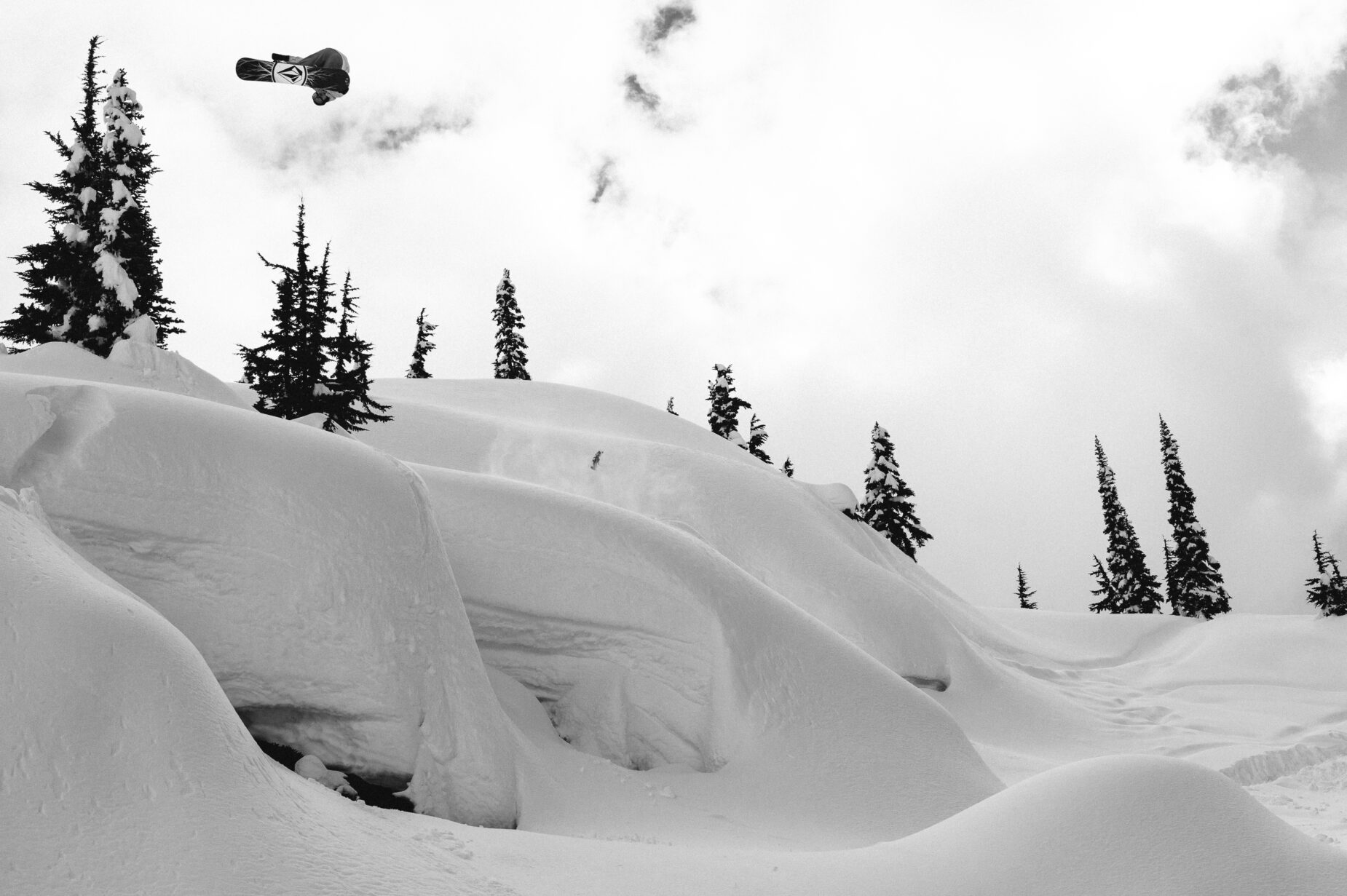
But while Longo and Navin have gone on to become two of the preeminent snowboarders of the last half-decade, it’s the personality and charm of Jake Kuzyk that is defining snowboarding’s great transition. Even in 2018, before Kuzyk came out of the closet and became known as the world’s foremost queer snowboarder, it was his unmistakable laugh that seemed to define a friendlier future for snowboarding. Since 2020, when both Kuzyk and Pendleton came out of the closet as gay during Torment Magazine’s Pride Week, looking back on this part reveals an undercurrent of positivity and pride. The entire section is bewilderingly happy, with stirring and hopeful New Order ringing through (“Do you believe in truth? The lies we told of youth. A cause we call our own, Beside an empty throne”) as Pendleton alternates between Kuzyk’s elegant riding and his buoyant personality, completing the part with Kuzyk soaring effortlessly from the shadows into warm, welcoming, light. Some credit is likely due here to Kuzyk himself, someone with a strong history in photography and making films, as his part seems to have an extra level of artistic dedication to spot selection and lighting. And thanks to the vision of both Pendleton and Kuzyk, Landline.’s undercurrents and illuminations have since become mainstream movements; no longer does snowboarding seem so focused only on talent, but rather on the complete range of talents and personalities’ enjoyment. Even before they felt comfortable enough to share their sexualities with the world, the tandem of Kuzyk and Pendleton articulated to the world that snowboarding should not be tough, masculine, or competitive. Snowboarding should be happy.
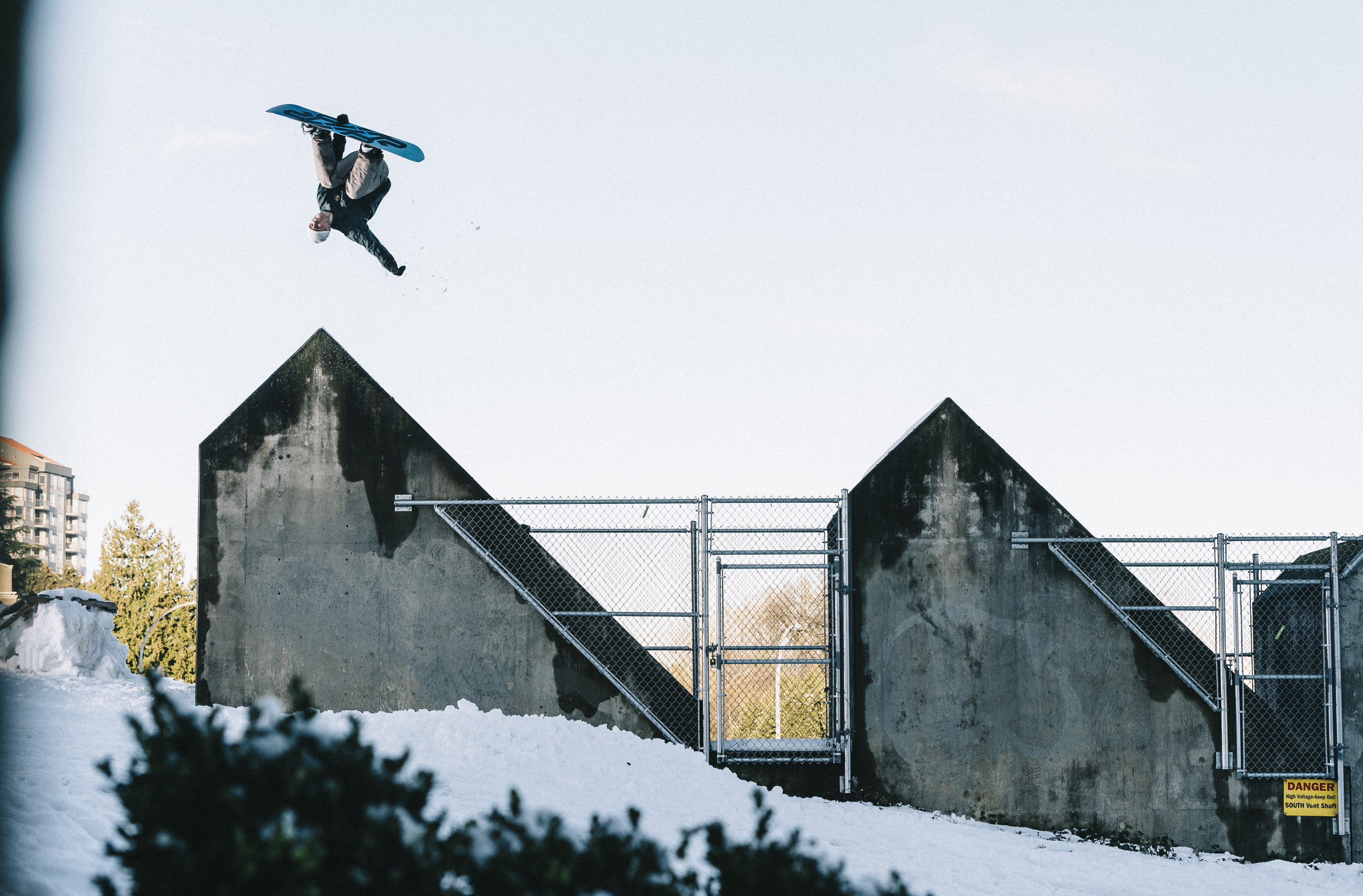
Long-time snowboard movie enthusiasts might read this and think I have glossed over much of history. That may hold some truth, but I have not meant to imply that there have never been happy snowboard movies before, or that snowboarding has never been about friendly personalities. But the decade and a half before Landline. was released was, without a doubt, a time focused first and foremost on impressive snowboarding. While the unmistakable charm of many snowboarders shone through, competition – formal or not – drove progression as riders sought to out-do each other. Serious editing, “big” tricks, and increasingly powerful music was the norm. In such a time, beloved videos like those from Robot Food, KidsKnow, or Think Thank became cult classics because they rejected this standard. Long before 2018, people watched Lame, Burning Bridges, or Stack Footy and fell for the concept of a snowboard movie about friends who love snowboarding. Later, those videos would linger instrumentally behind Landline.: the influence of Shelby Menzel (years later we are still watching Darrell Mathes and his friends have fun), Jesse Burtner et al. (handheld camera work follows the bedlam of Mike Rav and Cole Navin in much the same way that Burtner has followed Scott Stevens for years), or the team of Jess Gibson and Pierre Wikberg (compare the joyousness of Kuzyk set to New Order to that of Travis Parker set to Tears for Fears) shine through. But, in part because of a vacuum left in the world of snowboarding by the decline of major videos, it was Landline. that finally made these concepts customary. For much of snowboarding’s history, being goofy and loveable was mostly reserved for small crew videos. Serious snowboard movies were exactly that: serious.

But Landline.’s precisely placed nostalgia skips over the tribulations of that era, as the music, the visuals, and the atmosphere are derived from the era before snowboarding got big. In 2018, nineties-driven aesthetics were experiencing a renaissance well beyond snowboarding, and the influence of nineties snowboarding in Landline. may seem at first like just another well-placed callback. But in the time since its release (and with subsequent viewings), Pendleton’s influences and choices have been revealed as sharper and smarter than many others. The brief parts played by Iguchi, Nyvelt, and Lynn (and along with glimpses of Chris Roach and John Cardiel) have grown in significance as the video has aged and their influence on younger riders has spread, from haphazard longing to pointed calls to the best parts of the olden days. The older riders referenced – and the aged aesthetic seeping through – in Landline. are foundational for Pendleton’s vision of snowboarding moving forward. In the end, it was not only the vacuum left in snowboard film, but Pendleton’s expansive vision and attention to detail that catalyzed change.
It must be mentioned that an enormous part of that vision is most perfectly accentuated by the camera work of Pendleton’s crew. Skylar Brent, Harry Hagan, Jake Price, and Hayden Rensch all have a long history of directing, filming, and editing amazing snowboard videos, but finding collaborative cohesion, as the Landline. crew did, is a rare feat, especially with all of the filmers exploring their own niches with their 16mm film cameras, a task much more complicated than doing so with a digital camera. Each filmer manages to get close enough to the riders, holding their cameras steady enough to be professional but keeping things fluid enough that none of the excitement and personality is lost by sterile production, as so many snowboard videos have done before. In particular, the softness found by Jake Price, who led the backcountry filming, in the mountains of Landline., is a monumental feat. The logistics of filming in the backcountry, with avalanches, weather, deep snow, and remote locations, all breathing down a filmer’s (and rider’s) neck, is a major reason why so many backcountry snowboard movies have the kind of performance focused stagnant filming that Landline. rebukes. It would have been much easier for Price, Pendleton, et al. to have filmed Longo, Moore, or Paul, from stationary, wide angles, but the intimacy fostered by the diversity of shots, in particular close-ups (a difficult task, with a filmer trying to keep up with professional riders) is part of the beauty that makes Landline. such a statement.
Since Pendleton’s declaration, few things have become a more cutting criticism of a snowboard video than one that “takes itself too seriously.” Last year’s instant classics like Torment’s living room or the DustBox’s dreamcastle were the definitive videos of the year because they best conveyed the personality and the approachability of the riders in them. No longer do snowboard videos appear to be eight solemn snowboarders and one or two animated personalities, but instead focus entirely on each riders’ individuality. In watching living room, it’s obvious that Stark cares deeply for his star Cole Navin, and a similar paternal-like love is evident in Colton Morgan and Mo Jenning's attention to the jovial youth of the DustBox. In modern videos, in the time since Landline., feats of strength, incredible difficulties, and “battles” between rider and trick are replaced with things like Arthur Longo’s energy, Mike Rav’s freedom of expression, or Jake Kuyzk’s personality and style.
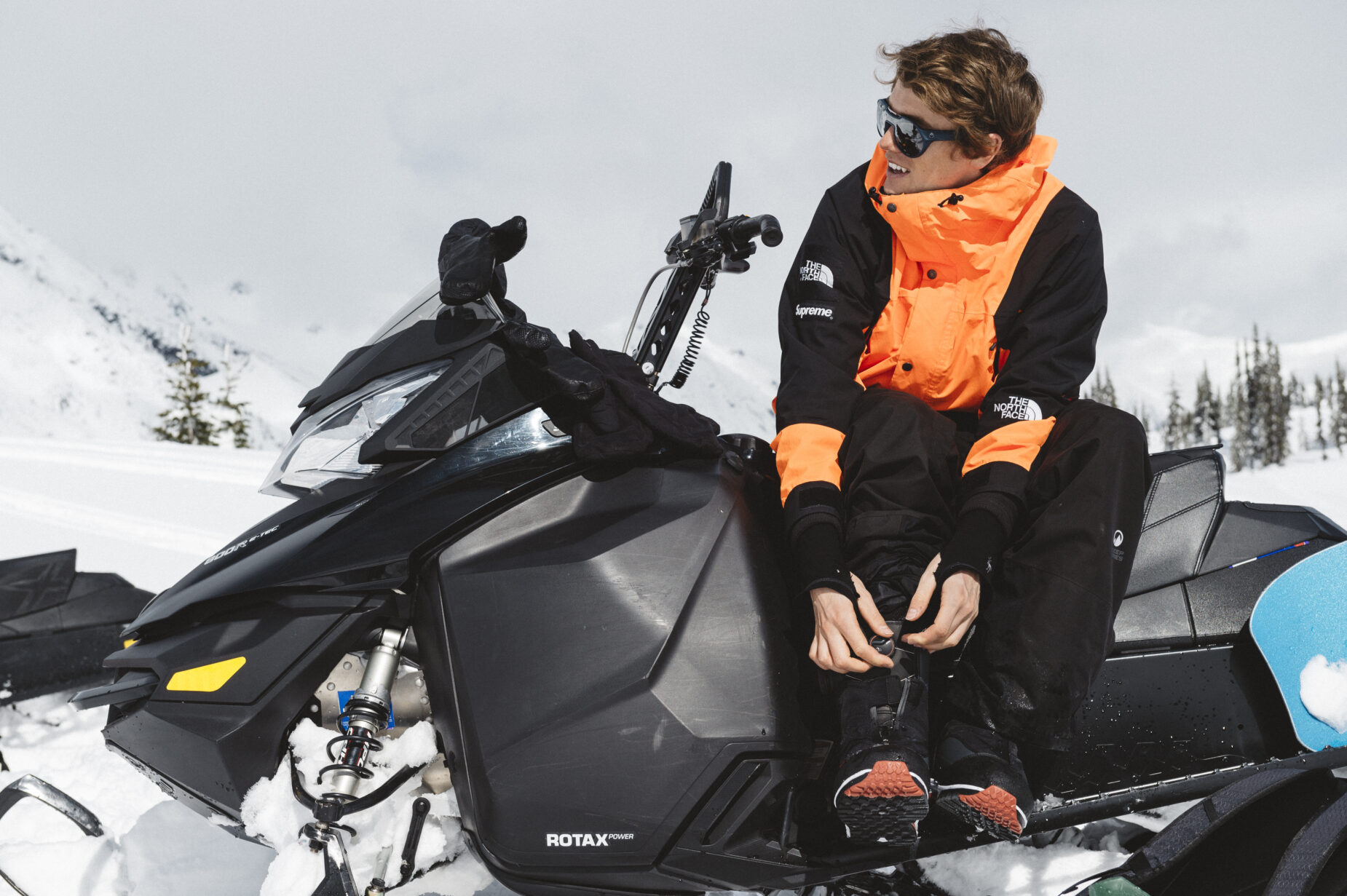
That’s not to say Landline. is the choke point in the hourglass of the history of snowboard videos. In calling it a turning point, it is important to also consider the influence and gravity of Hayden Rensch’s Beacon – released a few months before and the only film of that era to match Landline. in both the quality of riding, filming, and editing and in grandiosity – as the inflection point in the branching tree of snowboard film. Rensch, who was a part of the Landline. film crew for the first year of production, seems to have set Beacon further into the future than Landline., with dissolved segments featuring a mix of riders, esoteric and mostly lyric-free music, and with a more ethereal aesthetic. But now it is evident Beacon is simply exploring a different path. There are evident similarities between Rensch and Pendleton, who have collaborated before and operated in similar circles for years, but Rensch also asserts his own ideas; the personality and comradery of Landline. is still caught (briefly) in Beacon but is overshadowed by a more pensive photographic approach, studying the position of snowboarding within the wider world. Rensch’s camera lingers longer on architectural and environmental forms than it does on smiling faces, and interactions between snowboarders, civilians, and security guards are more prominent as he explores the relative absurdity of professional snowboarding as a concept. While the wholesome thematic underpinnings of Landline. are larger drivers on snowboarding, Rensch and Beacon’s photographic focus has driven much of the developing aesthetics of snowboard videos; modern filmers like Morgan find the time to focus on the interaction between snowboarders, the public, and their environment, while still allowing the personality of the Dust Box to shine through.
Despite the hallmarks of past generations seeping in, Landline. marked the beginning of the end of the old competition in snowboarding. In 2018, there was no space made in snowboarding for Kuzyk or Pendleton to come out of the closet, and no space made – besides one beautiful backside 360 by Hana Beaman – for female snowboarders in Landline. (it is important to note through his career Pendleton has pointed his lens eagerly at a range of fantastic female snowboarders, it has taken time for corporate backers to create more supportive and inclusive budgets, a movement many sadly still lag behind). But Landline.’s sincerity and warmth precipitates the changes that have followed – a more welcoming snowboarding, highlighted in the celebration of LGBTQ+ Pride month, advocacy for racially and gender diverse snowboarders, promotion of snowboarding to low-income families – by just being friendly. Throughout the film it’s the clips between the snowboarding that shine, and we see no glorification of dangerous falls or confrontation with security guards. The only “party” footage we see are two shots of Mathes – one of him and Navin drinking a beer calmly in a kitchen while someone does the dishes, and one of Paul shoving a celebratory “Landline.” cake in his face. Civilians walk silently, patiently past riders and offer brief praise, or watch attentively from nearby. And in the softness of the 16mm film, we watch groups of snowboarders frolic in city parks, play lighthearted pranks, and smile. In closing, the credits move slowly through shots of famously cheerful places like Mount Seymour and summers on Mount Hood, snowboarders swimming and sitting in the sun, and waving happily at the camera.
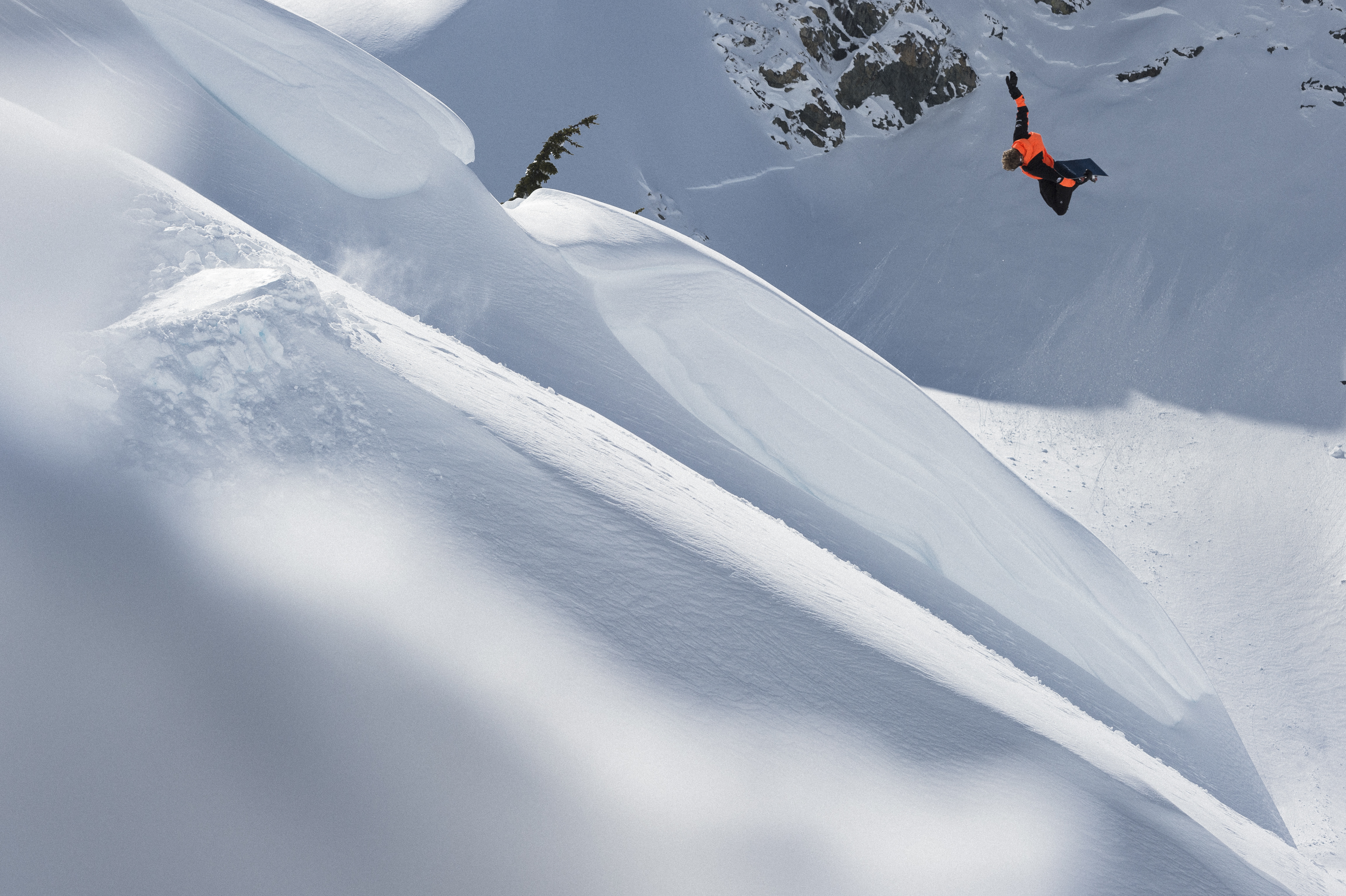
And so in Landline. we see snowboarding as it should be. Approachable. Fun. While five years is not a long time, the progression of art and snowboarding moves fast, and since the release of Landline. it is impossible to overlook the sea change in the sensibilities of snowboard culture. It is not a fluke that the shift to accessibility has coincided with an explosion in the availability of high-quality snowboard videos. Complicated tricks and heavy bails have rightfully fallen behind inclusion and camaraderie as the primary focus of our culture and of snowboard film. Friendship is much simpler for a talented videographer to capture than ground-breaking tricks, and thus videos, released widely and for free, seem pointedly directed at inspiring joy, not awe. For this we can thank Pendleton and the Vans team, and though the simple, historical, definition of a snowboard movie that Landline. followed has dissolved, its vision of snowboarding lives on. In the things that have changed in the last half decade – the tragic losses of Dillon Ojo and other young snowboarders, the rise in popularity of women’s boardsports, and the popularization of inclusion as a basic tenet of the sport – the pieces of what makes up snowboarding have shifted dramatically. But with the legacy of Landline., we have something more complete.

